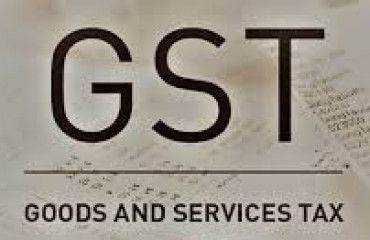
New Delhi: The north-eastern states have been the biggest beneficiaries of the five-year-old goods and services tax (GST) regime, according to the Reserve Bank of India (RBI) report on State Finances released earlier this week. Mint explains how some states gained but others didn’t.
New Delhi: The north-eastern states have been the biggest beneficiaries of the five-year-old goods and services tax (GST) regime, according to the Reserve Bank of India (RBI) report on State Finances released earlier this week. Mint explains how some states gained but others didn't.
What was the impact of GST on states?
North-eastern states have recorded a compounded annual GST revenue growth rate of 27.5% so far since the implementation of the GST as against 14.8% for all states, making them the biggest gainers of the new indirect tax regime. The top five states that required compensation for the shortfall in GST revenue were Maharashtra, Karnataka, Gujarat, Tamil Nadu, and Punjab. The five-year compensation period ended on 30 June, 2022. Without GST compensation, the states would need to augment their revenue by increasing compliance, plugging leakages and widening tax bases, the report said.
You might also like
India's rupee trade bid and the math behind it
RBI to appeal HC order on Yes Bank AT-1 bonds
How a non-compete clause pushed Roongta to RIA practice
How did north-eastern states gain from GST?
Unlike the central sales tax (CST), an origin-based tax, GST is a destination-based tax levied at the time of consumption of goods or services. If say, goods produced in Chhattisgarh are sold in Sikkim, GST would be levied in Sikkim and not Chhattisgarh. Hence, it benefits consuming states like Bihar, and those in the north-east. Producing states have complained that they have lost out under the indirect tax regime. Pre-GST, CST was collected by the producing state on inter-state transactions. Therefore, NE states, which do not have much production, gained immensely post GST implementation.
How did Karnataka, Gujarat gain but Delhi lose?
States with a strong manufacturing base such as Maharashtra, Gujarat, and Tamil Nadu are among top performers in GST, as these are also large consumers, making them big revenue earners. Experts say Delhi was impacted as the tax arbitrage on CST ended. Before GST, Delhi had a lower CST of 1%, prompting many to ship goods from Delhi by locating their offices here.
What about Punjab and Chhattisgarh?
Punjab is among states that needed the highest compensation as it used to get a large amount of purchase tax from paddy, rice and wheat, which got subsumed under GST. Chhattisgarh had stated that it would face revenue losses of ₹3,000 crore annually without compensation. It says it no longer gets revenues from any commodity produced in the state. Odisha would collect VAT from rice, food grains, pulses, which got exempt under GST. It also imposed CST on minerals and other commodities, which got subsumed.
Why did states stop getting compensation?
Initially, states were promised GST compensation for five years to make up for losses, which ended on 30 June, 2022. Compensation was calculated as the difference between the projected revenue growth based on 14% annual growth with 2015-16 base year and actual collection. According to RBI, states likely to be "most adversely affected" by the end of compensation are Puducherry, Punjab, Delhi, Himachal Pradesh, Goa and Uttarakhand, where share of GST compensation in tax revenue was over 10% on an average.
In Opinion, Manu Joseph says it's a wonder what most Indian politicians actually do. CM Eknath Shinde writes Mahrashtra was a magnet for investment MoUs at Davos. L. Viswanathan & Madhav Kanoria explain how govt's proposals will strengthen insolvency code. Long Story tells how to explain the budget to your grandma.
